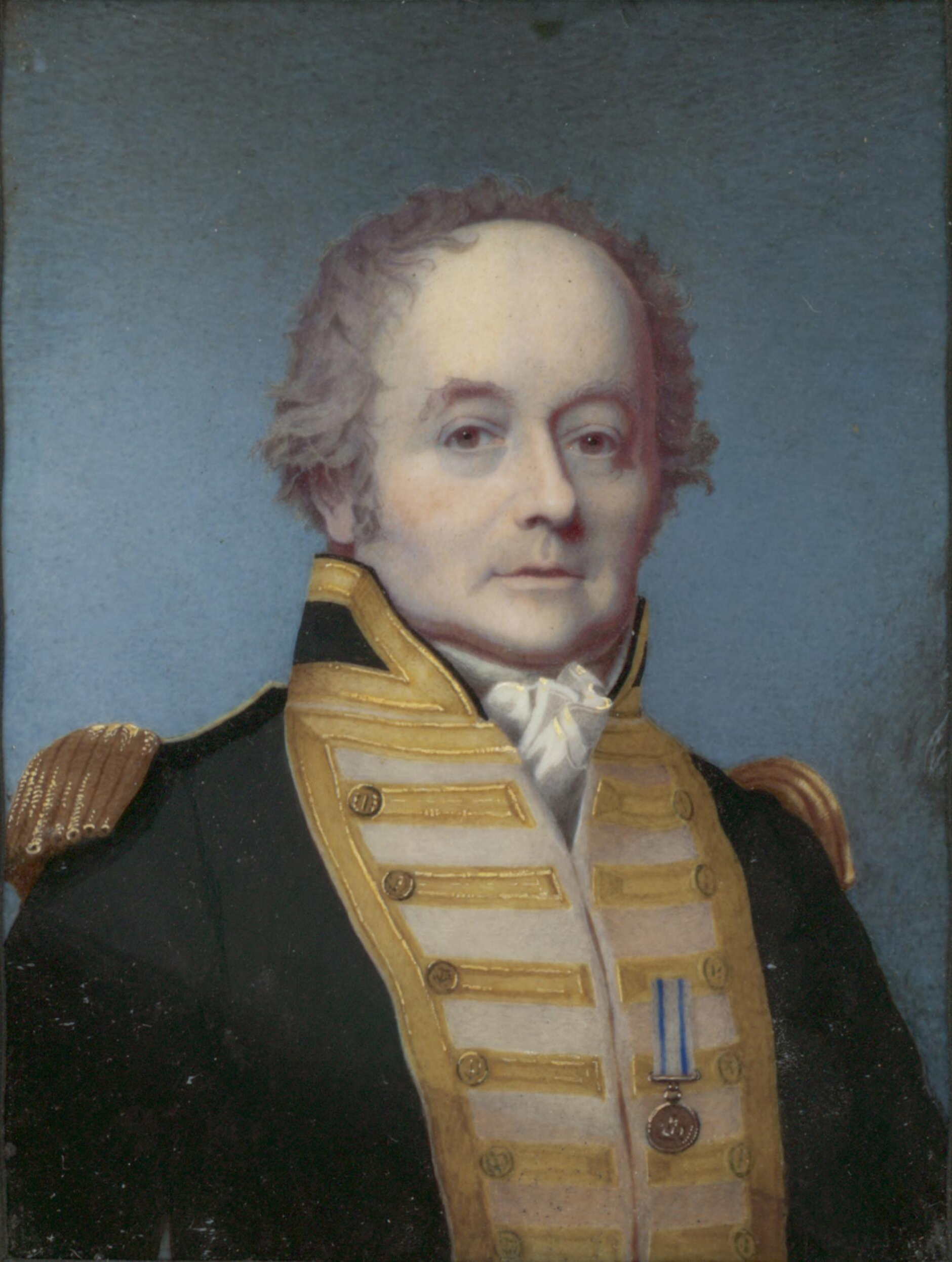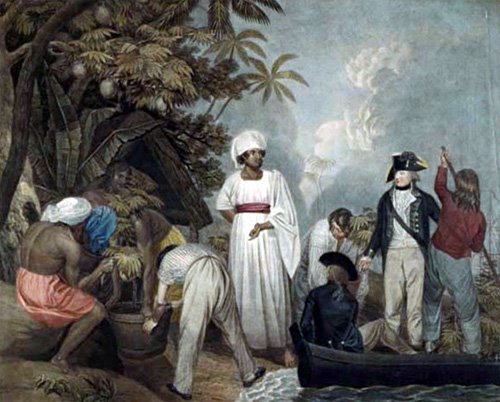Mutiny on the Bounty, 1789
 |
| Bligh and his supporters were set adrift. |
The basic facts are these: on April 28, 1789 the crew of the HMS Bounty, led by Fletcher Christian, mutinied against Captain William Bligh. Bligh and most of those loyal to him were set adrift with only meager supplies, a sextant, and a pocket watch. The mutineers ultimately landed at Pitcairn's Island, where they burned the Bounty and settled.
Popular belief holds that the crew rebelled because of the extraordinary cruelty of Captain Bligh. In fact, Bligh was comparatively lenient compared to other British naval officers of the time. According to the ship's log, he punished infrequently and preferred verbal rebukes to corporal punishment. He was concerned with the health of his crew, striving to maintain a good diet and adequate sanitation on the voyage. He also tried to curb the spread of venereal disease among his men, but was not very successful in that regard.
 |
| William Bligh in later life. |
The first trouble on the voyage occurred at Cape Horn. Bad weather made the Horn unusually difficult, and it took a full month for the ship to round it. After ten months at sea, the Bounty finally reached Tahiti on October 26, 1788.
Once in Tahiti, the crew began collecting and potting breadfruit trees. What no one had counted on, however, was that it would take considerable time for the plants to reach a state where they could safely undertake the sea voyage. The crew stayed on Tahiti for five months, living ashore and caring for the plants. The crew became used to the ways of the island, and relations between captain and crew became increasingly worse. Bligh became increasingly strict and unpredictable and seemed to single out Christian for punishment.
The Bounty and its company left Tahiti on April 5, 1789. On April 28, the crew mutinied, with Fletcher Christian as their leader. Out of the 42 men on board (excluding Christian and Bligh, and two men who had died on the trip out), 18 were mutineers, 22 remained loyal to the captain, and 2 attempted to stay neutral.
Bligh and five loyal officers were forced into the ship's launch. More volunteered to go with him, knowing that if they stayed with Christian they could be hung as mutineers, whether or not they had actively participated. When the 23-foot was launched, Bligh and 18 men were on board. The boat was so heavy that its gunwales were only a few inches above water. They had four cutlasses, enough food and water for a few days, a sextant, and a pocket watch -- no charts, no compasses.
 |
| Cultivating the breadfruit trees. |
Bligh, miraculously, was able to bring the tiny boat and most of his men to safety. They attempted to land first at Tofua, about 30 nautical miles from where the mutiny took place. There, one of the crewmen was stoned to death by natives. After that, Bligh was afraid to attempt landing anywhere for fear of the same results. He managed to bring the launch 3618 nautical miles (that's the equivalent of about 4163 land miles) to Timor, the nearest European post. The trip took 47 days.
Another British Navy ship, the HMS Pandora, commanded by Edward Edwards, was sent to search for the Bounty and its mutineers. After finding and taking on as prisoners the mutineers who remained in Tahiti, it spent a few months searching for the rest before turning back to England. It was sunk on a reef, losing 31 men and four prisoners. The remaining 89 crewmen and 10 prisoners manned four launches and also made for Timor.
Back in England, both Bligh and Edwards faced courts martial for the loss of their ships. (This was standard procedure, by the way, and no reflection on their abilities or conducts.) Of the 10 men who were taken prisoner by the Pandora, four were acquitted (the four who had been loyal to Bligh but could not be taken on the launch), two were found guilty but pardoned, one was reprieved on a technicality and pardoned, and three were convicted and hung. Both Bligh and Edwards were acquitted.
In fact, Bligh was given command of another expedition to collect breadfruit on the HMS Providence. This time the expedition was successful -- 2126 breadfruit trees were successfully delivered. The slaves in the West Indies, however, refused to eat the breadfruit, so the project was ultimately useless. Eventually, Bligh attained the rank of Vice Admiral. In his later life he also served for awhile as the Governor of New South Wales, but was arrested and overthrown during the Rum Rebellion. Apparently, he just wasn't very lucky as a commander.
 |
| Fletcher's son, Thursday October Christian. |
No comments:
Post a Comment